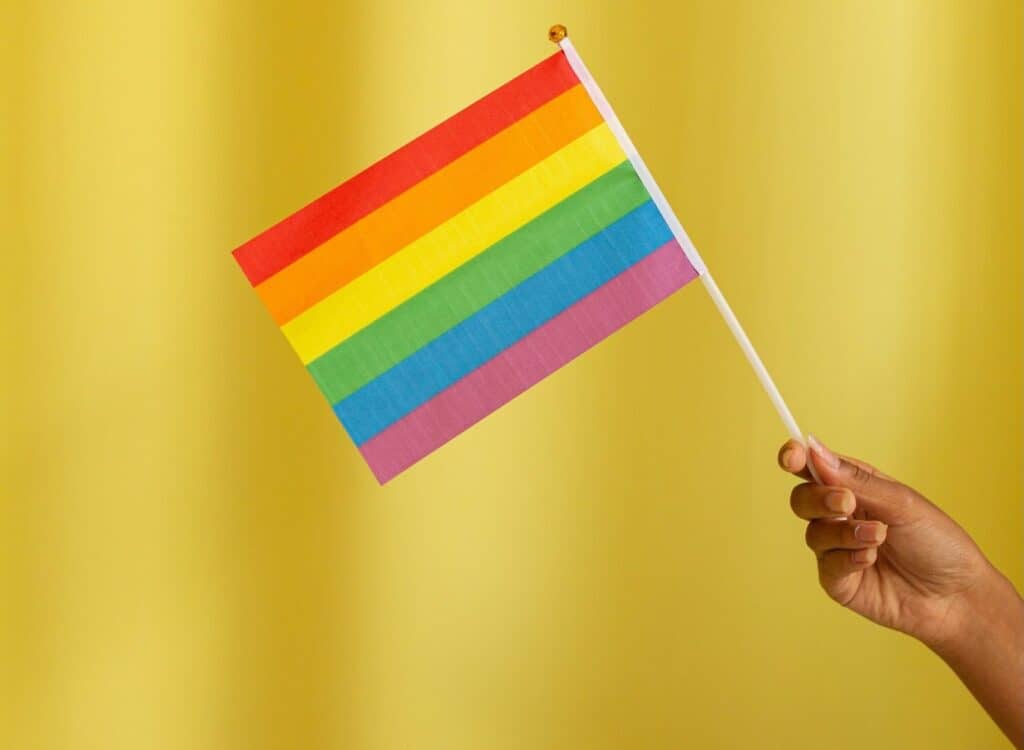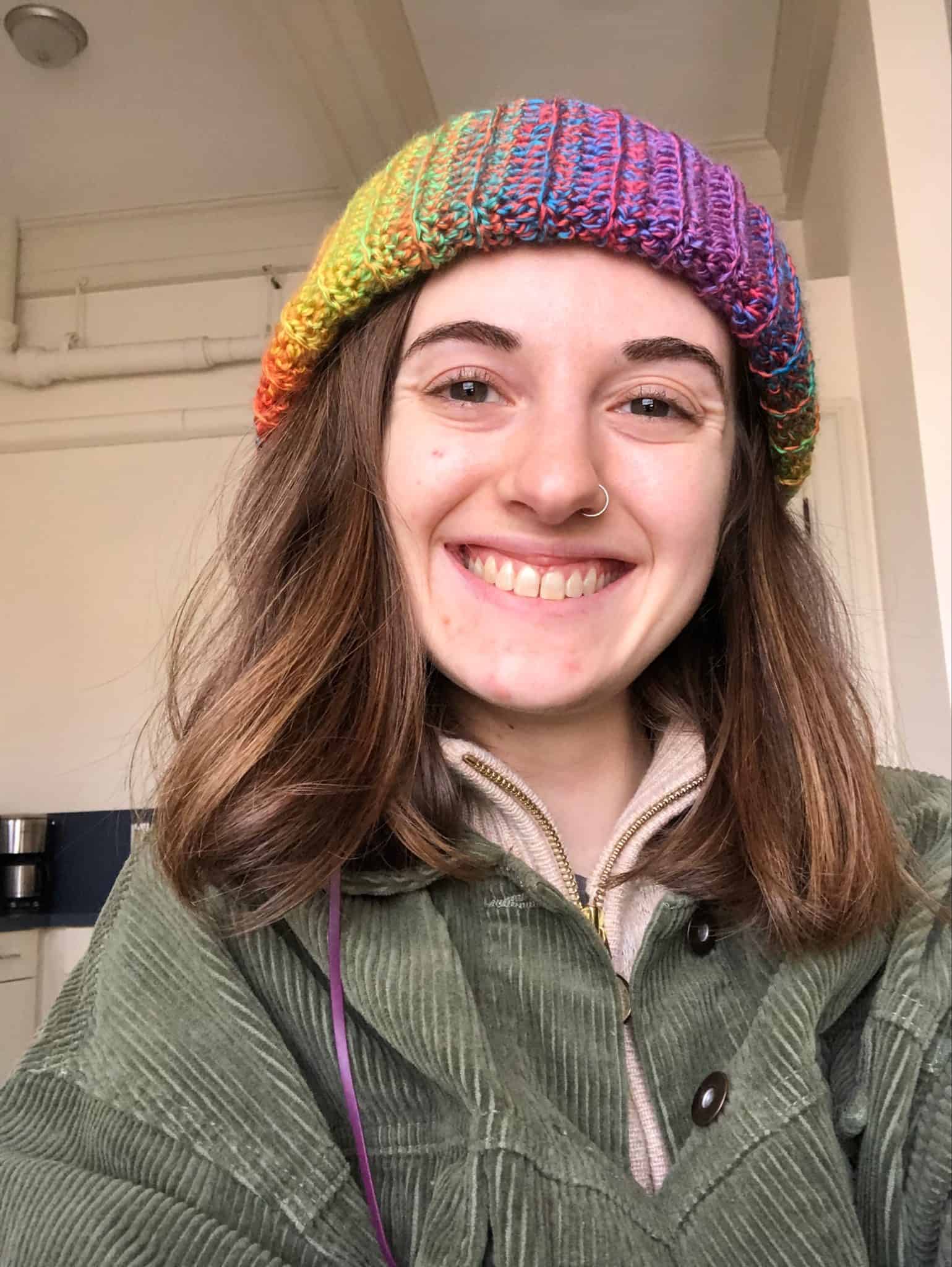
||
"As an autistic person, Pride events can be massively overwhelming for me...I have some tips to help other autists manage the challenges that come up at Pride."
Pride parades and festivals present an exciting opportunity for LGBTQIA+ individuals to celebrate their true selves within an accepting community of like-minded peers. The problem is, Pride events are rarely accessible for disabled people.
Parade routes create crowds of people pushing forward to get a good view, often without any places to sit down or escape the throng when it becomes overstimulating. Pride parties are hosted at packed bars and clubs that leave disabled people in vulnerable positions. Stories of visually impaired Pride attendees knocked over by hordes of people, and wheelchair users treated as if they were furniture are not uncommon.
As an autistic person, Pride events can be massively overwhelming for me. Before I found out I was autistic, I didn’t understand why Pride events felt dangerous. I came to Pride to celebrate my identity and connect with other people like me. So why did I feel so unsafe?
Each individual’s limitations are unique. Some people are unable to attend at all because of the lack of accessibility, and that is a tragedy. We must work collectively to make Pride accessible for everyone.
In the meantime, however, I have some tips to help other autists manage the challenges that come up at Pride.
Pack A Bag Of Essentials
Grab a backpack or tote bag and pack it full of everything you need for the day. I’ve been to Pride events before and felt woefully unprepared, which sucked the fun out of the whole day.
Bring water and snacks to keep you hydrated and fueled up. Pack sunscreen, a hat, and a sweatshirt to stay safe and comfortable in any weather. Sensory tools like ear defenders, noise-canceling headphones, dark sunglasses, and fidget toys help you stay regulated in such a bustling, potentially overwhelming environment.
And don’t forget your phone! I like to bring a portable charger as well to make sure my phone doesn’t run out of battery and leave me stranded.
Dress For Comfort
I know the urge to dress to impress can be stressful, especially if you’re hoping to meet new friends or a new partner at Pride. But trust me, I’ve learned it the hard way: feeling uncomfortable fabrics rubbing against me or straps digging into my skin is a sensory nightmare on top of all the other stimuli at Pride. Dressing for comfort is the way to go.
If you really value dressing for looks over comfort, at least wear a comfy pair of shoes. Your feet will thank me later!
Know Your Escape Route
Pride parades are crowded. Once you’re in the huge pack of people, it’s hard to figure out a quick route out into the open air. Instead of heading to Pride unprepared and finding yourself panicking in the packed streets, do some research ahead of time to find the best place to go to give you some space or to leave Pride altogether to take a quick break.
Take Lots Of Breaks
Even if you don’t feel like it, it’s important to pace yourself. Locate a nearby park, restaurant, or coffee shop that you can head to when it’s time to take a break. If you struggle with FOMO, I hear you, but I promise, giving yourself a few short breaks throughout the day can be the difference between enjoying your Pride experience and going home in tears.
Set Reminders For Daily Tasks
When you struggle with executive dysfunction, remembering to take breaks, drink water, eat food, take meds, reapply sunscreen, and all the other little maintenance things easily get lost among the excitement of Pride.
Set reminders on your phone to help you maintain your basic needs. If that doesn’t work for you, ask a friend to try to remind you too.
Figure Out Your Plan Ahead Of Time
Planning ahead is essential. How will you arrive at Pride? If you’re driving, do you know where to park? What events do you want to attend in particular? Where will you meet up with friends? It helps the day go much smoother if you have an outline.
Research The Pride Event’s Disability Accommodations
While nowhere near fully accessible, many Pride events do provide some accommodations for disabled people. Search on the Pride event’s website or social media to identify their accessibility policies, and reach out to the coordinator. You deserve to benefit from any accommodations they can give you.
Keep Your Friends In The Loop
If you’re going to Pride with friends, they can help you manage executive functioning, remind you when to take breaks, and help you notice when you’re getting overwhelmed.
Tell your friends about your escape plans, so if you disappear they know where to find you. Let them know what to look for if you start getting overwhelmed so everyone can work together to find a safe place for you to rejuvenate.
If you attend Pride alone, have a close friend text you every hour or so to check in with you.
Pride is an exciting event for any member of the LGBTQIA+ community. However, it’s disheartening that events honoring such an inclusive group won’t make Pride accessibility a priority. While these tips can help autists enjoy Pride, it isn’t our responsibility to make Pride accessible for ourselves. Autistic people and other disabled people deserve to attend Pride with as much ease, comfort, and safety as anyone else.
My wish for all neurodivergent people headed to Pride celebrations this June is this: to have fun, stay safe, and feel included. Happy Pride!
Featured image by Monstera.

Maya (she/they) is a queer freelance writer with a passion for mental health advocacy, social justice, and education. She primarily writes about subjects that spark her passion: autism, LGBTQIA+ issues, horror movies, child care, mental health, history, and more. In their free time, they love playing with their dog, working on their queer YA dystopian psychological horror novel, and spending time with their wonderful girlfriend.